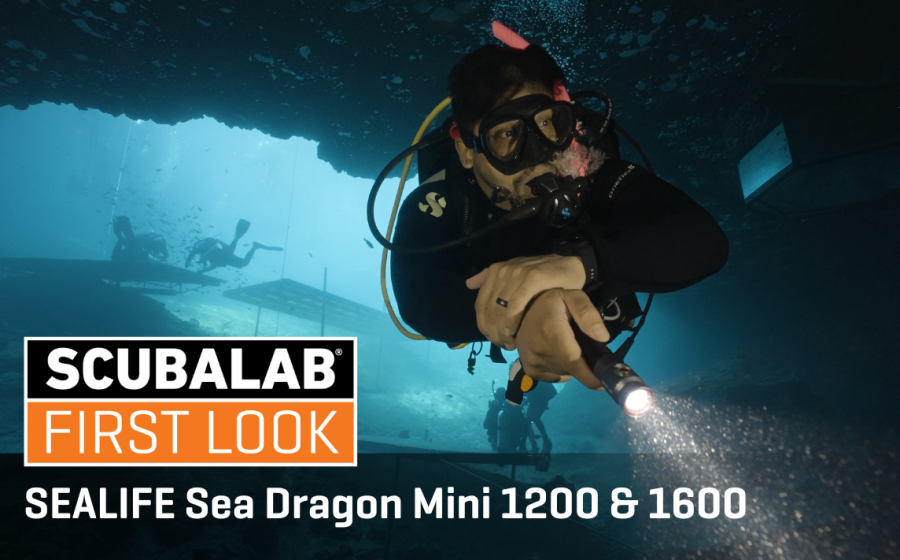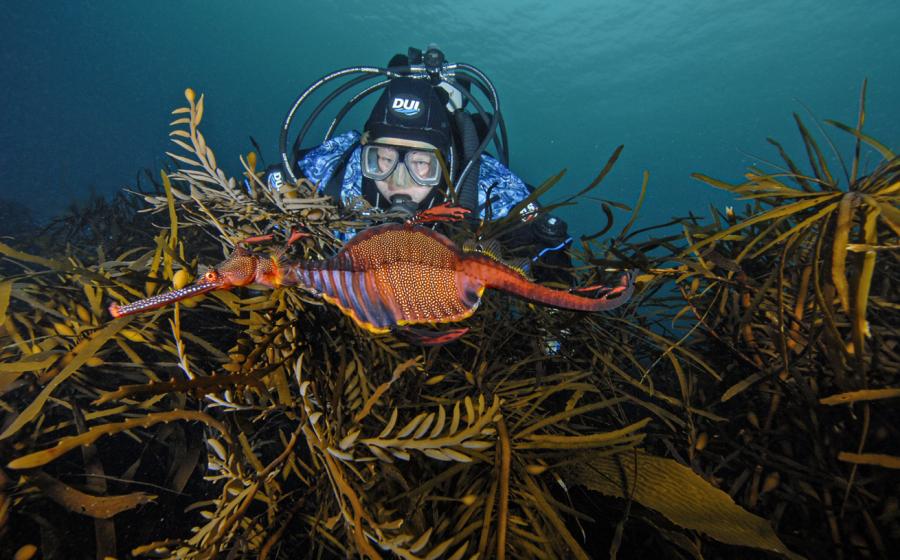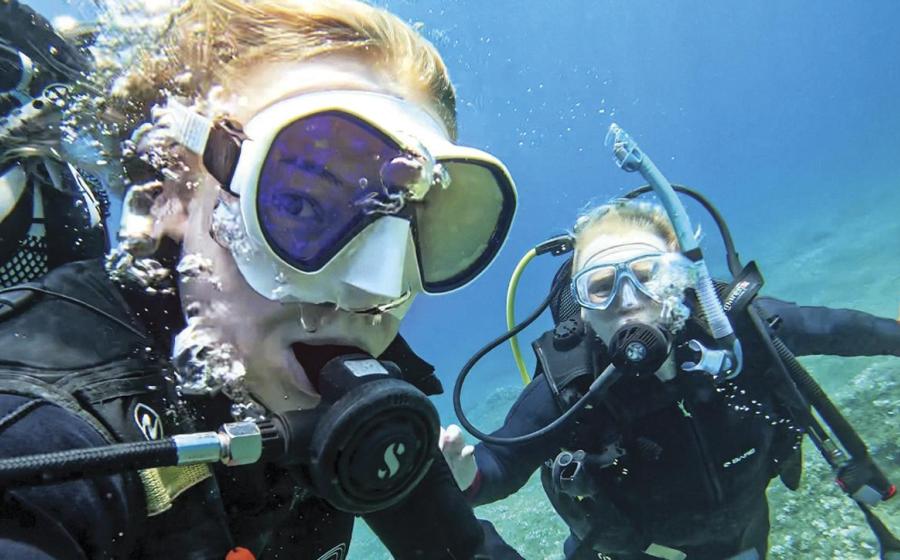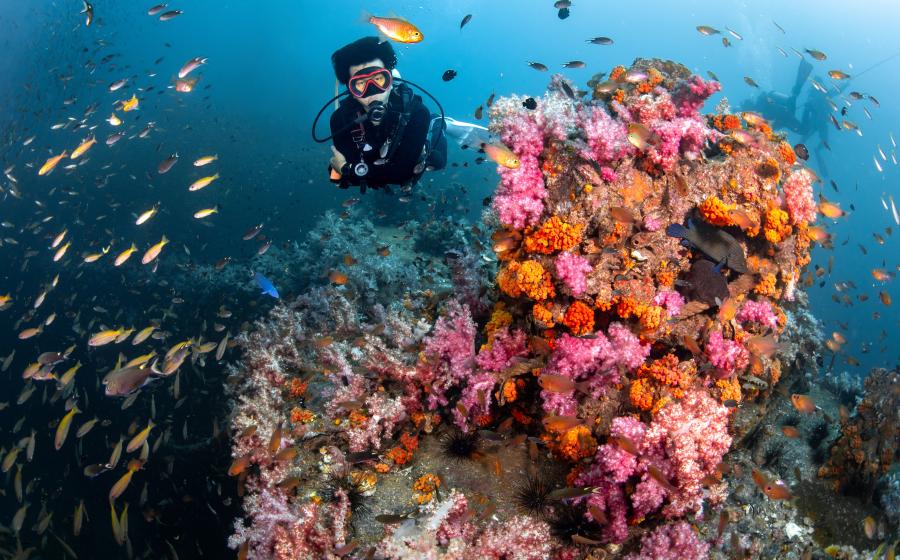Preserving Paradise
Our instructions were clear: Get to the bottom quickly and let the ocean come to you. Galapagos does not wait for tardy divers. ''You should constantly be looking above and around you,'' our dive guide James told us. ''You will miss seeing most of the aquatic life if you spend too much time focusing on the reef.''After that first briefing, we geared up and headed for the Zodiac. Most of the diving here is from small inflatables, since most drops are within 30 feet of shore. Immediately upon reaching the bottom, I heard the dive guide's rattle and looked up in time to see a school of about 20 scalloped hammerheads swimming rapidly overhead. Once I'd gained my composure, I spotted seven whitetip sharks asleep in a sandy patch between two ledges. They scattered like roaches surprised by the light as I moved in to get a couple of photos. A few minutes later, two spotted eagle rays cruised toward us but were abruptly scared off by an inquisitive trio of sea lions. The sea lions led me into the shallows, where they showed off their agility by flipping and twisting underwater, stopping momentarily to attempt to steal a fin from a diver. The Galapagos archipelago is a marine wonder that sits approximately 600 miles west of Ecuador and includes 13 major and six minor islands. The islands were formed at least nine million years ago when an opening between two of the earth's plates created a site for volcanoes. These openings are known as ''hot spots.'' The plates are still moving toward the east at about 6 inches a year. Throughout the archipelago lie numerous volcanic craters. On Bartolome Island, you can still visualize eruptions as you walk along a path that takes you within feet of craters and textured layers of lava still intact after a million years. The lighthouse at the island's peak -- 435 feet high and more than 400 steps above the water -- anchors the upper end of the trail. Those who make the physically demanding trek are treated to a spectacular view of Pinnacle Rock, one of the archipelago's most famous landmarks.There is no question the Galapagos Islands are a tropical Pacific paradise. But like most everywhere else, this paradise does have its share of growth and environmental problems. Weather patterns such as El Niqo can have a dramatic effect on the ecosystem. It is estimated that on some islands, populations of shark and sea lion dropped by half after the latest El Niqo phenomenon, and the once common nudibranchs, particularly those on the northern islands, were virtually nonexistent. More than severe weather, human pressure now threatens the islands.Due to the poor economic conditions in Ecuador, the islands are considered a land of opportunity. During the past 30 years, the population swelled from 2,000 to well over 15,000. In addition, more than 60,000 people a year pay the $100 park fee to visit. Only 3 percent of the available land belongs to private citizens; the rest belongs to the national park.''Because of the recent growth, there is a shortage of basic services like fresh water, doctors and health. We also have seasonal people who don't care and leave their garbage everywhere,'' said a 42-year resident who asked not to be named. To help reverse such problems, the Ecuadorian government recently enacted several new laws. To stay longer than three months, you must be employed or at least have an employment contract. If caught breaking the law, you will be deported back to the mainland and not allowed to return. Besides the inherent problems associated with population growth, the imported dogs, cats, goats, rats and pigs are throwing off the natural balance. For millions of years, endemic animals had the opportunity to evolve without the presence of many natural predators. Consequently, most of the animals do not fear humans or other animals. Resident reptiles such as land and marine iguanas and lava lizards won't move from their spot in the middle of the trail until you almost step on them. Red-chested frigates and blue-footed boobies go about their business with little more than a slight acknowledgment of your presence. This indifference makes them easy prey. The land tortoise, Galapagos' most famous resident, has been exploited both by humans, who over the years have slaughtered more than 100,000, and by pigs and rats that eat their eggs. On three islands, the tortoise is now extinct.The good news is that measures are now in place to eradicate non-native species from the islands. In fact, goats have already been removed from several of the islands. For underwater species, both our dive guides said they believe illegal fishing is the biggest problem facing the marine park. In fact, while we were approaching Wolf Island to set up our dives, a pirate fishing vessel moved to the other side of the island. When our boat left, it maneuvered back to where it had been. New laws have started to cut down on the number of illegal fishing boats. Officials extended the park boundaries out 40 miles from the islands. This makes it harder for fishing boats to ''accidentally'' come close to the islands. Also, old laws prosecuted the owners of criminal vessels. But that often became an enforcement problem because owners lived in other countries. The new law places the responsibility on the captains, who are less willing to risk fines and jail. Despite stiffer laws, the marine park is still an enormous zone to patrol, and the islands don't yet have the resources to effectively enforce the new laws. Given the tremendous value of the islands as a world-renowned eco-tourism destination and the heightened recognition of problems, many are optimistic for the future.As far as divers are concerned, the Galapagos remains one of the most amazing dive destinations on the planet. To help protect this natural wonder, all you need do is come and enjoy. Funds generated by diving and eco-tourism provide the strongest incentive for the continuation and expansion of protection programs.






